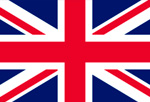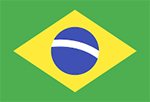Aflora Mangue Project Advances Another Step with Planting in Bom Parto

- Nearly 10,000 seedlings have been planted along the banks of Lagoa Mundaú.
- The initiative aims to restore a total of 47 hectares of mangroves.
Maceió, February 18, 2025 - The Aflora Mangue Project has reached another milestone with the planting of 3,525 native mangrove seedlings across 1.41 hectares along the banks of Lagoa Mundaú in Bom Parto. Combined with the previous initiative in Flexal, the project has now surpassed 10,000 seedlings planted across approximately 4.5 hectares. The initiative aims to restore a total of 47 hectares of mangroves.
Mangroves play a crucial role in supporting aquatic and terrestrial wildlife, serving as nurseries for various species and protecting river and lake banks from erosion. Preserving these ecosystems is essential for maintaining environmental balance and sustaining local communities.
The implementation of environmental compensation measures is part of the Socio-Environmental Agreement signed in December 2020 between Braskem and the Federal Public Prosecutor's Office, with participation from the Public Prosecutor's Office of the State of Alagoas and support from the Municipality of Maceió.
Precautions
Currently, the planted areas are undergoing maintenance and monitoring. Ongoing assessments track plant growth based on indicators such as height and stem diameter.
The seedlings used for restoration in Bom Parto were collected and cultivated within the Aflora Mangue project area. Before planting, the soil was left to "rest," allowing it to absorb nutrients from the tidal movements.
Species
The red mangrove zone is closest to the lagoon, submerged most of the time. In this environment, it is distinguished by the large, exposed roots (pneumatophores), which are often mistaken for stems.
The black mangrove is found slightly farther from the lagoon but is still directly impacted by the tides. In this area, the soil is exposed at low tide and submerged at high tide, with the vegetation's distinctive exposed, pointed, and twisted roots.
The white mangrove is located farthest from the lagoon and is only submerged during the highest tides. Its roots are fewer in number, and its stems, which connect the leaves to the trunk, have a distinctive reddish hue.
Planting in Flexal
In Flexal, approximately 6,800 native mangrove and Atlantic Forest seedlings were planted across three hectares near Riacho do Silva. These seedlings were sourced from accredited nurseries and grown from propagules-plant structures used to generate new plants-collected within the project area. Just like in Bom Parto, the area is undergoing maintenance and monitoring.
Photo credits: Philipe Medeiros

 EN
EN

